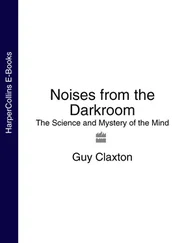Most of the lensing occurs in the region where the wormhole’s shape in the bulk is strongly curved. This is the region where its outward slope is steeper than 45 degrees, so I define the lensing width to be the radial distance, in the bulk, from the wormhole throat to the location with 45-degree outward slope (Figure 15.1).
The formal leaders of the discovery team were Jamie and his former postdoctoral students John Kovac (now at Harvard) and Chao-Lin Kuo (now at Stanford), along with Clem Pryke (now at the University of Minnesota).
The centrifugal force depends on the planet’s orbital angular momentum, a measure of its orbital speed that is constant along its orbit (Chapter 10). In plotting how the force changes with distance from Gargantua in Figure 17.2, I hold that angular momentum constant. If the angular momentum were a bit smaller than the amount Miller’s planet actually has, then the centrifugal force would everywhere be smaller, and the two curves in Figure 17.2 would not cross. There would be no balance point, and the planet would fall into Gargantua. That’s why the location of Miller’s planet in Figures 17.1 and 17.2 is the closest to Gargantua that the planet can stably live—the location I want, in order to get maximum slowing of time. For more details see Some Technical Notes at the end of this book.
The table’s numerical values for the resonant frequencies are not in familiar units. To convert to familiar units, we must multiply by the cube of the speed of light and divide by 2π GM , where π = 3.14159…, G is Newton’s gravitational constant, and M is Gargantua’s mass. This conversion factor is approximately one vibration per hour, so the first predicted frequency in the table is about 0.67 vibrations per hour. The conversion factor for the die-out rate is the same.
In the movie, when the Endurance is in orbit around Mann’s planet, we see Gargantua subtending about 0.9 degrees on the sky—nearly twice the size of the Moon as seen from Earth. From this I compute that Mann’s planet is about 600 Gargantua radii from the black hole. At this distance, the time required for the planet to travel inward to near Gargantua is at least forty days—a lot longer than the crew seem to spend on and near Mann’s planet, but reasonable for the outward trip to reach the planet; see Chapter 7.
But the relativistic laws do offer the possibility of backward time travel by a circuitous route: going outward in space and returning before we left. To this I return in Chapter 30.
See Chapter 3 for a brief description of this quest.
Widely available on the web. See, for example, the end of the article “Flatland” on Wikipedia .
I discuss quantum fluctuations in Chapter 26 and bulk fields in Chapter 25.
For details see Lisa Randall’s Warped Passages (HarperCollins, 2006).
Why is the magic distance, at which the inverse square law begins, 0.1 millimeter instead of, say, 1 kilometer or 1 picometer? I have chosen 0.1 millimeter quite arbitrarily. Experiments have proved that gravity obeys the inverse square law down to about 0.1 millimeter, so that is an upper limit on the magic distance. It could perfectly well be smaller.
The Gravity Recovery and Climate Experiment, a joint US/German space mission launched in May 2002 and still collecting data in 2014.
Gravity field and steady-state Ocean Circulation Explorer, GOCE.
According to Einstein’s relativistic laws the dark energy that (presumably) makes the expansion of our universe accelerate has a second effect: It produces an enormous tension in our brane, like the tension in a stretched rubber band or rubber sheet. And Einstein’s laws also dictate that, in order for spacetime outside the AdS sandwich to be free of warping, as we desire, each confining brane must have internal pressure that is half as big as our own brane’s internal tension. It is this pressure that is dangerous.
Or the buckling could make one or both branes spring outward, releasing the AdS layer and so destroying Newton’s inverse square law and making the planets all fly away from the Sun—not quite so bad for our universe, but pretty miserable for humans.
The meanings of the various symbols in the equation are spelled out on the Professor’s other fifteen blackboards, along with other information about the equation, all of which I ghost-wrote for the movie’s filming. You can see photographs of all sixteen blackboards on this book’s page at Interstellar.withgoogle.com.
More precisely, the locations of the mirrors’ centers of mass.
In 1955, John Wheeler pointed out the likely existence of quantum foam, with wormhole sizes 10-35 meters: 10 trillion trillion times smaller than an atom; the so-called Planck length .
The thing he simulated was actually something called a scalar wave, but that is an irrelevant technicality. A few years later Andrew Abrahams and Chuck Evans at the University of North Carolina repeated Choptuik’s simulations using a gravitational wave and got the same result: a naked singularity.
Israel and Poisson gave this singularity the name mass inflation singularity , and that is the name that physicists have used ever since. I prefer infalling singularity and use that name in this book.
This big difference is due to the Endurance ’s having slightly less angular momentum than Mann’s planet, after tidal forces have done their thing. In Figure 27.3 the Endurance climbs up onto the volcano’s rim, but Mann’s planet does not quite make it up to the rim; it spirals back down the volcano’s side (centrifugal forces push it outward) and then up the gravitational energy surface, away from Gargantua.
The agreement between our volcano-rim analogy and these force arguments is due to a key fact: The net force (gravitational plus centrifugal) on the Endurance is proportional to the slope of the energy surface (Figures 27.3 and 27.5). Can you figure out why?
In technical language, signals from above are Doppler shifted to the red by his high speed, which compensates the blue shift produced by the hole’s gravitational pull, so colors look fairly normal.
Due to abberration of the starlight.
In Figure 29.7, Cooper has been turned over so he is facing the top of Murph’s head as in Figure 29.6. This suggests that in the wall images 2, 3, 4, and 5, Murph should also be turned over. However, having her upside down in four images and right side up in two would be confusing to a mass movie audience, so the wall images have not been inverted here or in the movie.
In the movie Murph’s bedroom is not a cube; its length, width, and height are 20, 15, and 10 feet, and Cooper’s chamber is three times larger in each dimension: 60, 45, and 30 feet. For simplicity, I idealize the bedrooms and chambers as cubes.
Chris and Paul call these chambers “voids” because they are regions through which no extrusions pass.
Читать дальше












